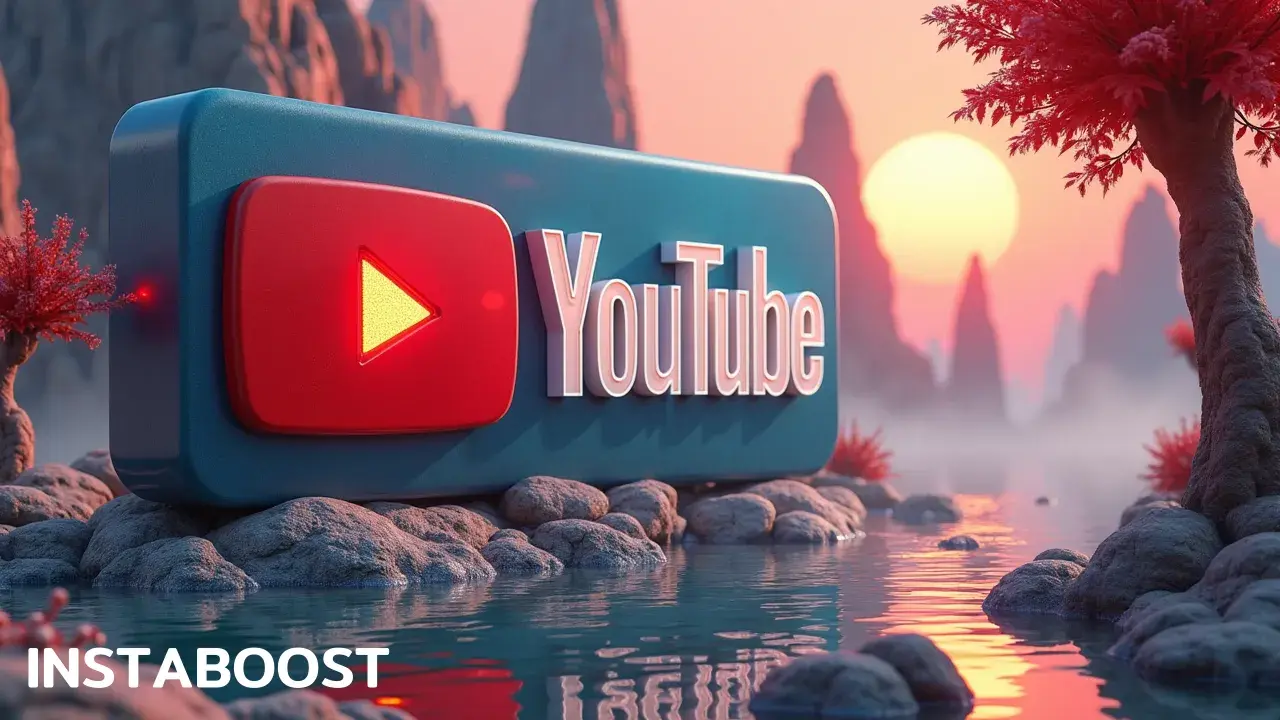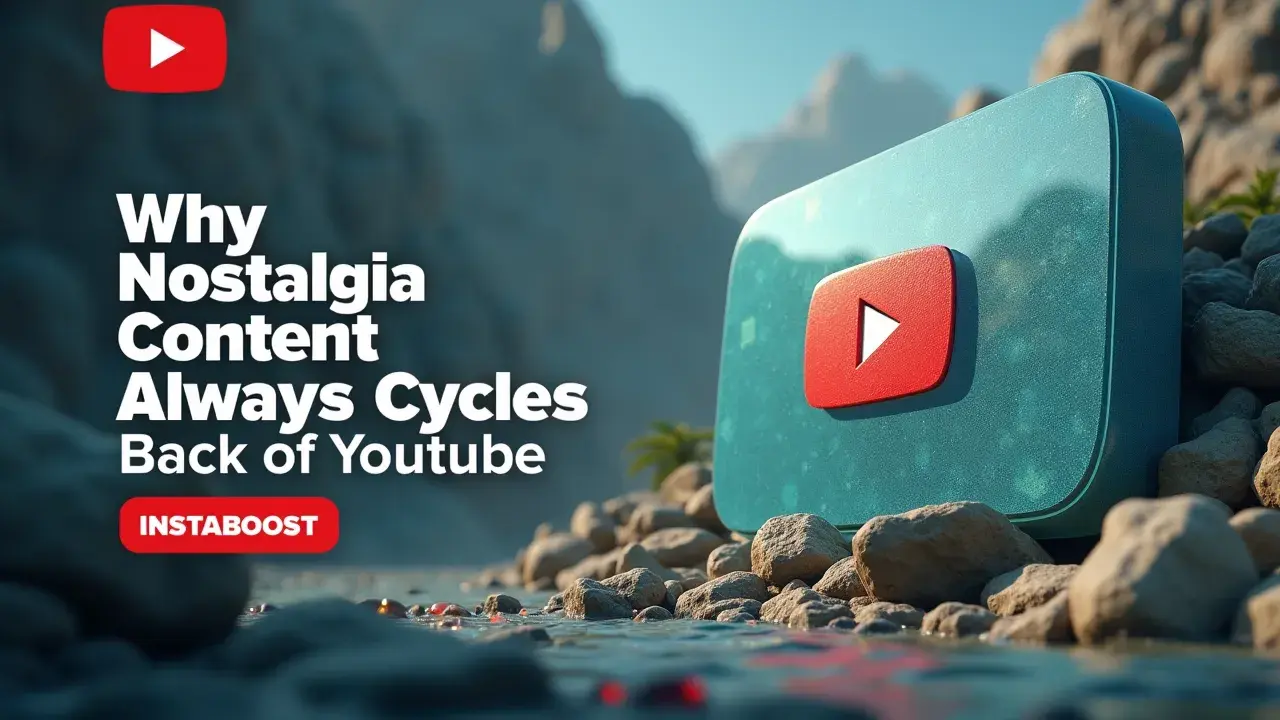Why Does Nostalgia Content Keep Cycling Back on YouTube?
Nostalgia resurfaces on YouTube because familiar media reliably triggers memory, comfort, and shared identity. Cycles emerge as creators revisit past eras, audiences age into new nostalgic phases, and cultural moments revive old formats and references. The psychology of reminiscence pairs with platform culture that rewards recognizable themes and community participation. When creators align era-specific cues with audience memories, the results feel timely, relatable, and repeatable, guiding a smart path toward resonance and sustained engagement.
The Magnetic Pull of Digital Nostalgia
Nostalgia always seems to find its way back onto YouTube, and it’s not really a passing thing. There’s a pattern to how people keep circling back to old memories and searching for meaning in what they watch. When someone uploads a playthrough of an old video game or clips from a TV show they grew up with, it usually goes deeper than just missing the past. It’s more about having a place to reflect on what those things meant, but now with a bit more experience and alongside others who also remember them.
YouTube almost encourages this by recommending these kinds of videos over and over, especially if they spark conversation or sharing. Even if you’re not looking for old cartoons or early internet jokes, they tend to show up again and again, and it never really feels random. Other platforms do this too, of course, but YouTube’s back catalog and the way video captures detail make these moments feel more alive.
Sometimes, just browsing around for tips or stumbling across a YouTube success toolkit will surface even more of these throwback videos, woven right in among the new uploads. What stands out to me is that nostalgia on YouTube isn’t reserved for the people who were there in the first place. Younger viewers get interested in “retro unboxings” or those long “year in review” videos, and they start to build their own idea of what those times were like, even if they never lived them. It’s less about running out of new ideas and more about wanting to share something familiar, whether for comfort or connection.
As trends keep changing, there’s still this steady return to old favorites – a way of looking at the past that isn’t about longing, exactly, but about figuring out what these things mean to us now.
As trends keep changing, there’s still this steady return to old favorites – a way of looking at the past that isn’t about longing, exactly, but about figuring out what these things mean to us now.

Feedback Loops: The Secret Engine Behind YouTube Nostalgia
A lot of people think the answer is to make more videos, but what really makes a difference is paying attention to the way people respond and adjusting from there. That’s what gives nostalgia videos their edge on YouTube. It’s not just the old TV show openings or playthroughs of games everyone remembers – what stands out is how people react and how creators pay attention. The algorithm notices when something gets a bunch of clicks or comments out of nowhere, like when someone uploads an intro from a ‘90s cartoon and suddenly there’s a rush of interest.
But the numbers only say so much. If you look through the comments, you’ll see people telling stories about watching with their siblings, or correcting some detail, or asking the creator to talk about a certain toy next time. When a channel about old tech gets flooded with people sharing memories or making suggestions, it’s not random – it’s a pattern, and the creator often follows where those conversations lead. That’s why these videos start to feel more focused over time, more in tune with what people want to talk about. The ones who do it best don’t just dig up something old for the sake of it – they look closely at what viewers are actually saying.
Even brands like INSTABOOST notice these patterns and use them to decide what they’ll support or feature; you can see it reflected in things like consistent subscriber increase on these types of channels. Nostalgia on YouTube isn’t so much about wishing things were like they used to be – it’s more about this ongoing exchange, the way people keep picking up on different details or asking to see something from a new angle, and how that keeps shaping what’s next.
Blueprints for Lasting Nostalgia: Why the Best Throwback Content Follows a Plan
Structure is what keeps things moving, especially when you hit a wall and don’t feel that creative spark. For YouTube creators who focus on nostalgia, having some kind of plan matters more than people might think. If you look at channels that do “retro rewind” series or break down old years piece by piece, you’ll notice they don’t just grab old clips at random. Instead, they build out routines – maybe a set format for each episode, a regular playlist, or even a specific week where they post throwback videos. It gives them something steady to fall back on, and viewers start to pick up on the pattern too.
When people know what to expect and when, they’re more likely to stick around or even subscribe, because it feels reliable in a way that’s hard to find online. The channels that do this best are the ones that actually treat their old videos as something worth coming back to – updating titles, adding some context, maybe even tying older stuff into what’s happening now. It’s interesting how consistency in approach can also improve YouTube video stats over time, even without chasing viral moments. It’s not flashy, but it’s consistent, and that seems to build a kind of trust that keeps people coming back. Especially now, when what’s popular can shift overnight, having that structure makes it easier for both creators and viewers to keep their footing. It’s not really about chasing the next big trend; it’s more about giving people a reason to return, even when everything else feels like it’s always changing.
The Double-Edged Sword of the Nostalgia Cycle
No one really explains this part to you. Everyone says nostalgia on YouTube is a guaranteed way to get attention – mention an old cartoon or bring up a classic video game, and suddenly, the numbers climb. But once you start leaning into those memories, something shifts.
The people watching aren’t just reminiscing anymore; they come back wanting more, and each time, it’s a little more specific. It stops being about those broad “remember when” moments and turns into something more focused – someone wants to see that Nickelodeon bumper from 1997 or the commercial for a cereal that disappeared twenty years ago. Before long, you notice you’re in this pattern where you’re always searching for the next reference, digging for details you barely remembered yourself. It’s a strange spot to be in: you want to make videos people care about, but it’s easy to feel like you’re stuck repeating yourself, or like you’re narrowing your own range.
There’s always some new shortcut or trick floating around, like talk of affordable views for creators, but those things never really address the actual feeling of being boxed in by the algorithm. It kind of sneaks up on you, the way this approach can quietly turn from a fun idea into something that boxes you in. So it isn’t just about finding new things to talk about from the past, but figuring out how to step back sometimes, even if it means risking a drop in views or confusing people who subscribed for those deep dives. There’s not really a roadmap for how to navigate it, and most of the time, you’re working it out as you go.
The Next Loop: How Nostalgia Content Reinvents Itself
When something from a trend hangs around, it usually shapes what comes next. Even on YouTube, where things move quickly, nostalgia doesn’t fade away after a trend peaks; it tends to shift and resurface in different forms. A simple “remember this?” video might grow into a longer deep-dive, spark collaborations between creators of different ages, or get reworked into a lighthearted spin on the original idea. It isn’t just about repeating the same thing – there’s a kind of ongoing exchange between people making videos and people watching them, where both sides play a part in where things go.
Over time, the cycle builds on itself. People start expecting more, shared jokes start to feel more personal, and the videos themselves usually start looking a little sharper. If you’re making videos, the hard part isn’t in recycling old stuff, but in really noticing what keeps coming up in the comments, what parts get the biggest response, and what people seem interested in learning more about.
Sometimes, you can tell a moment is catching on just by how often it’s being shared or talked about; support content with sharing and it often takes on a life of its own beyond the original upload. That’s the difference between a quick nostalgic hit and something that lasts. So, if you’re trying to reach people – whether it’s through classic games, old TV shows, or vintage tech – it helps to pay attention to how these cycles play out. Nostalgia doesn’t really leave YouTube; it just keeps changing shape, depending on who picks it up next.
Why Nostalgia on YouTube is Built to Stick
It’s interesting how often nostalgia shows up on YouTube. It’s not only because the algorithm keeps putting old videos in front of us, but also because it reflects how these online spaces change and settle over time. When people go back to things like old music videos, reaction memes, or clips from cartoons they watched growing up, it’s not always about wanting comfort. It’s actually a way people create a kind of shared memory together. Each time someone rewatches something, leaves a comment about where they were when they first saw it, or when a creator remixes an old joke or reference, that memory gets a little stronger for everyone.
These videos don’t really fade away; instead, they pick up new layers as more people come back to them. So if a creator brings up a joke from early YouTube days or takes time to talk about a cartoon that most people have forgotten, it isn’t only about chasing views. Sometimes it’s even a reminder of how channels themselves have grown or changed, like when you notice a YouTube channel upgrade tucked into the background of an old playlist. It’s almost like adding another page to a scrapbook that anyone can look at or add to in their own way. This is probably why nostalgia sticks around longer here than on other sites.
Old shows or viral dance challenges keep popping up because new people find them, bring their own stories, and that starts the whole thing over again. In a way, nostalgia works on YouTube because it’s not something people do alone. Each time someone goes back, it’s another way of connecting, or maybe noticing that something from the past still fits, even as everything else online keeps moving.















